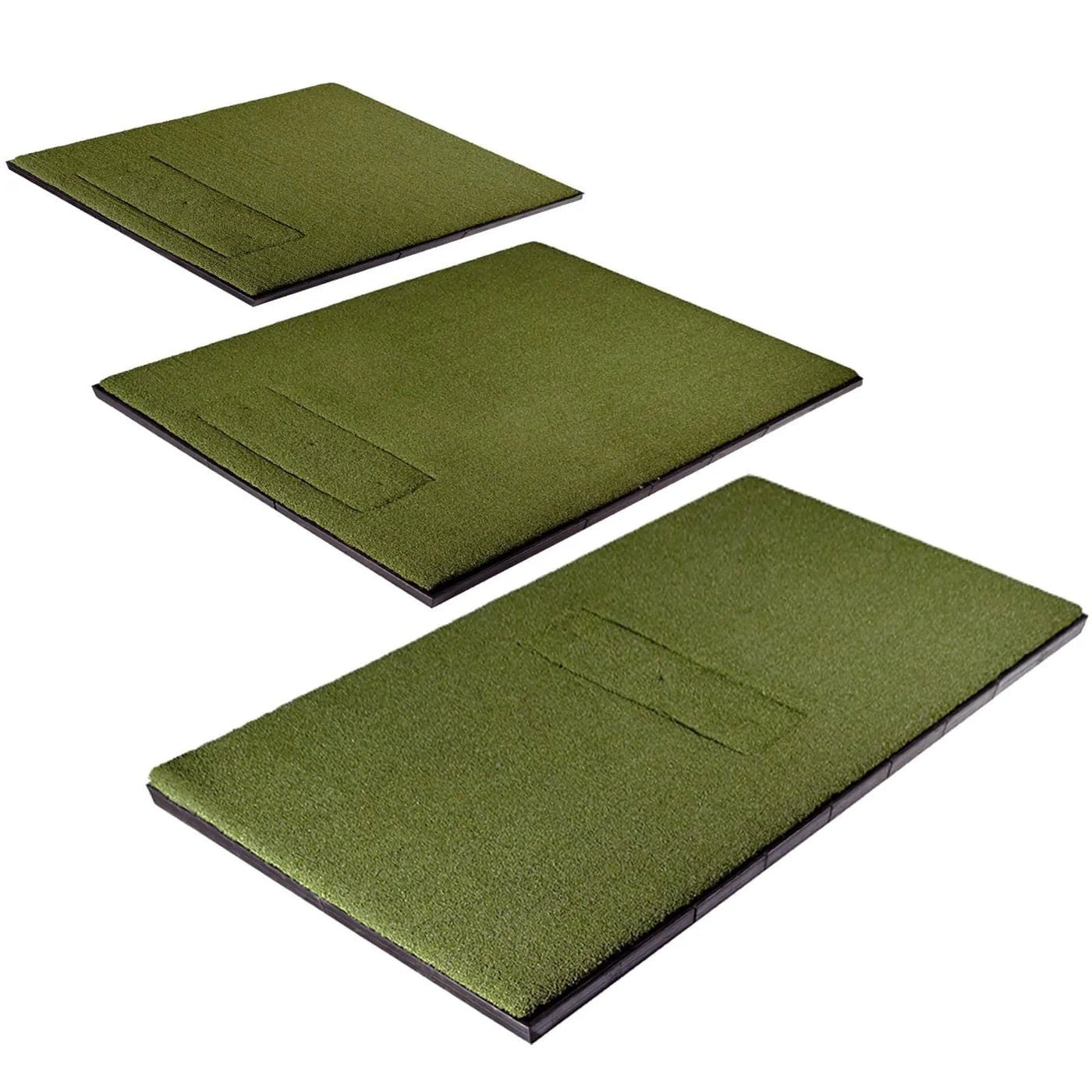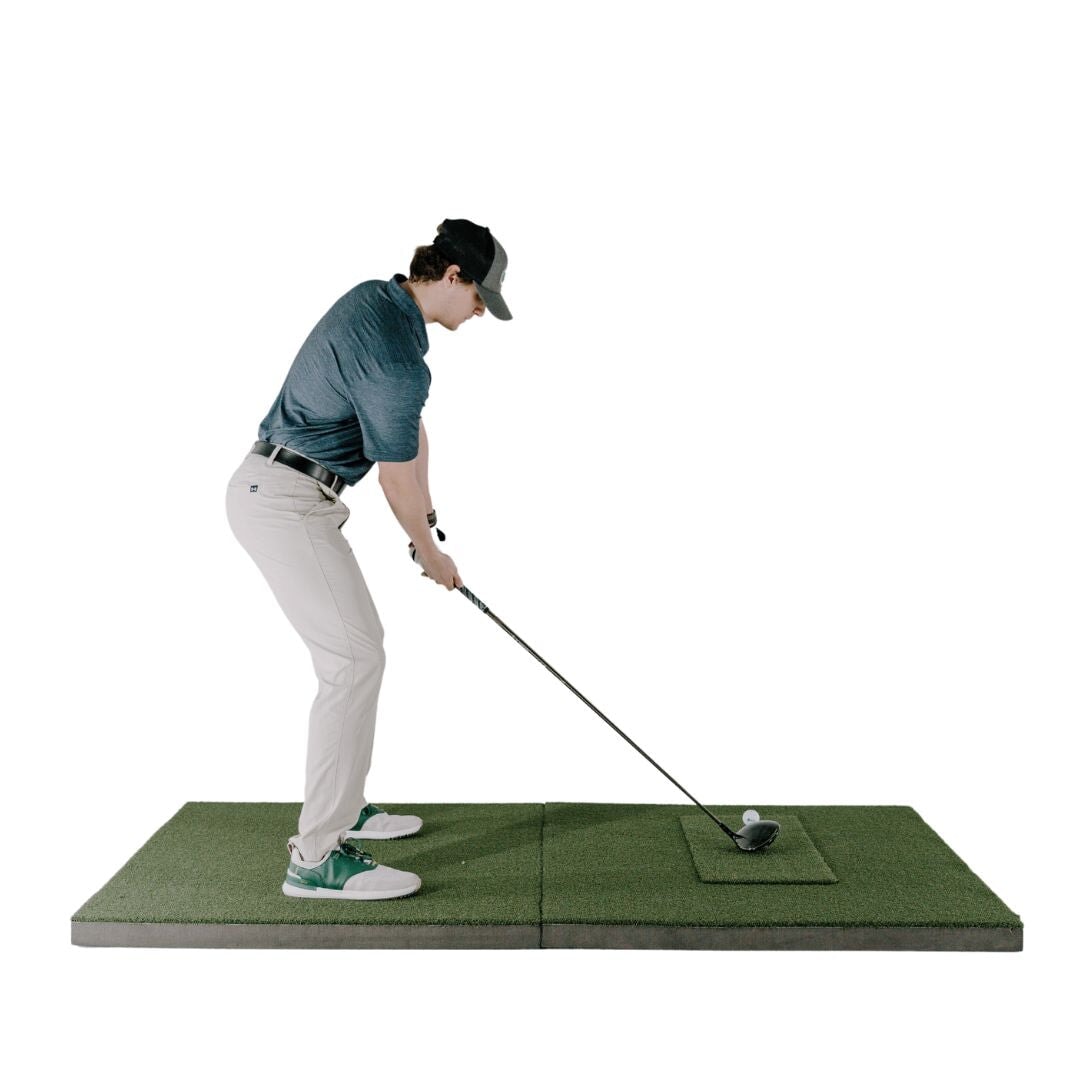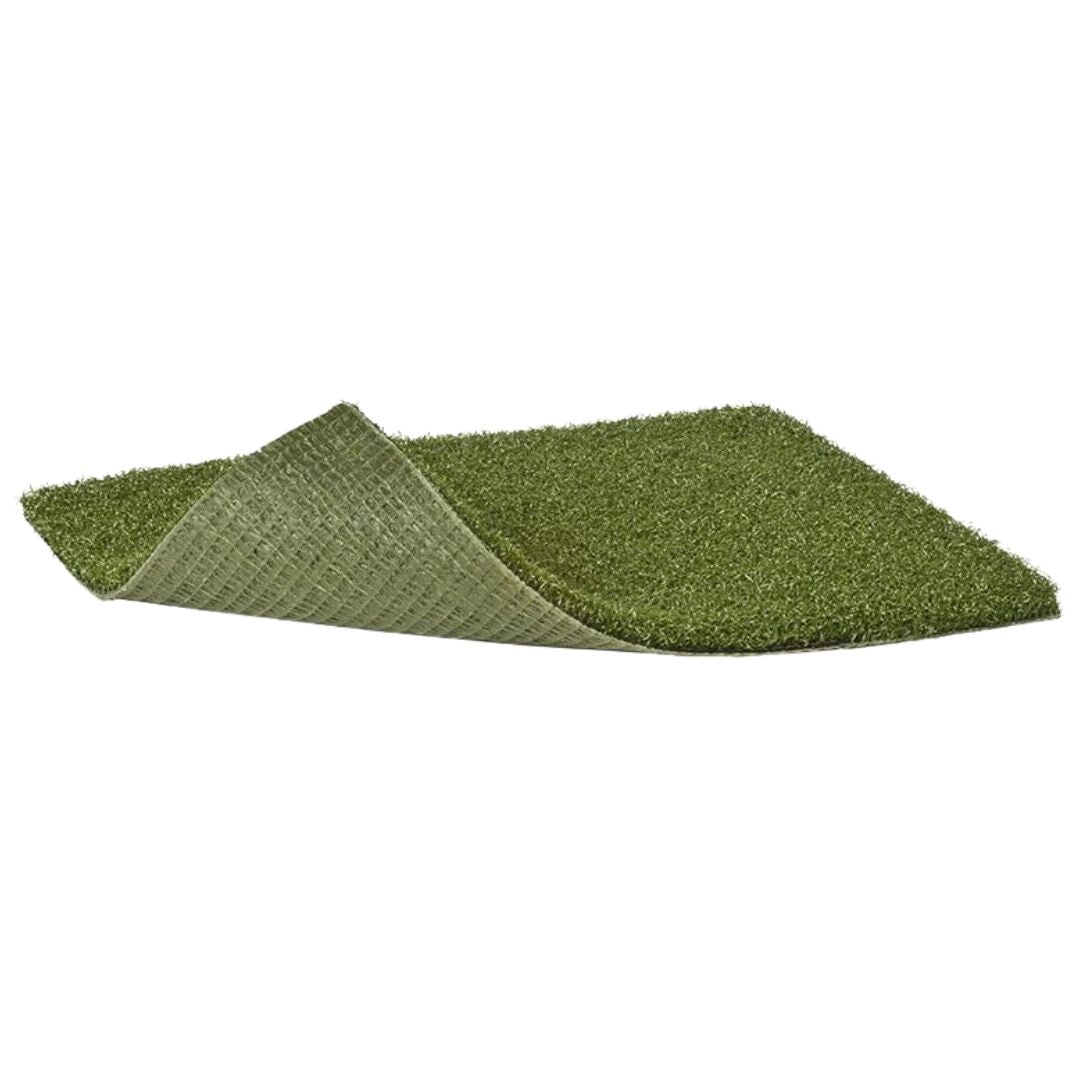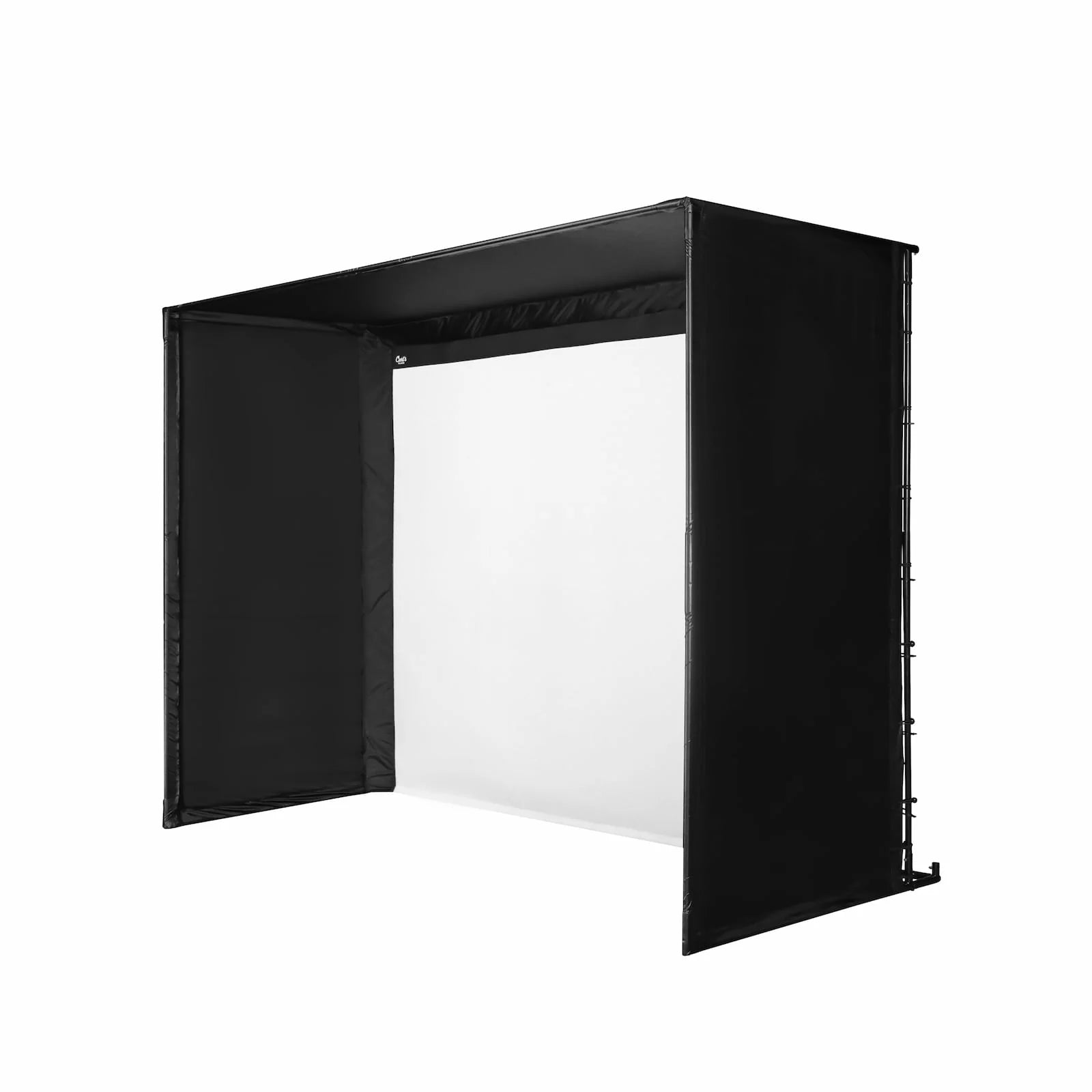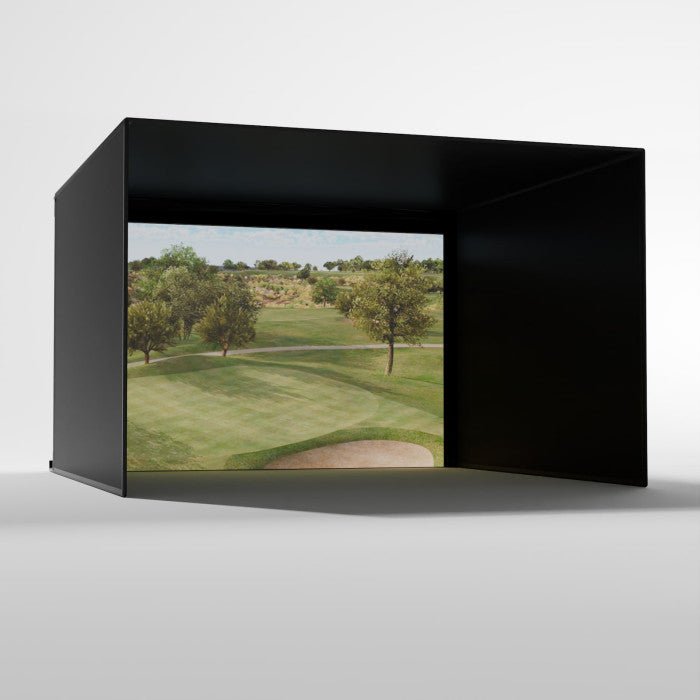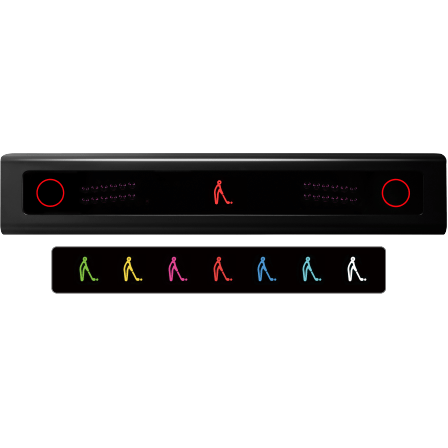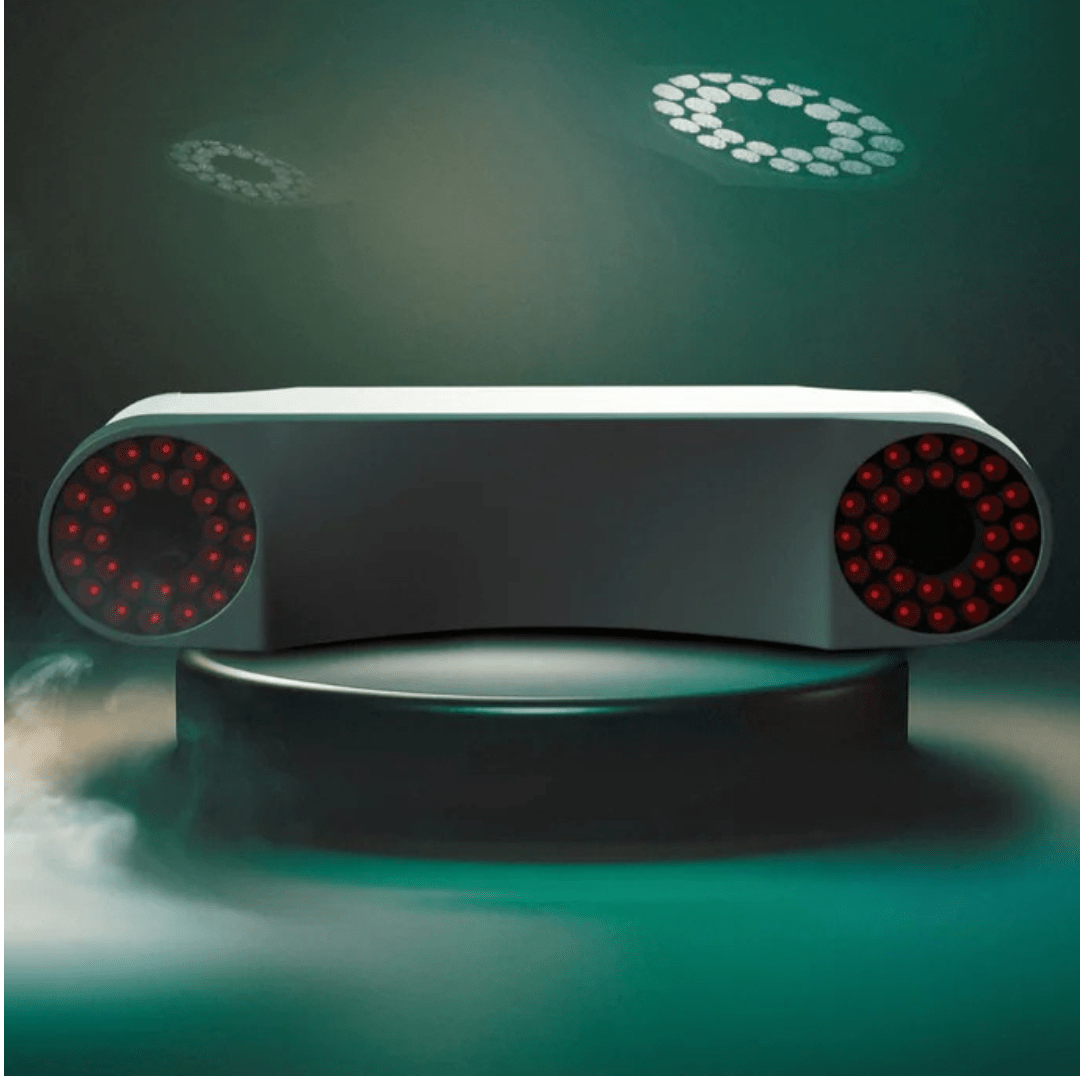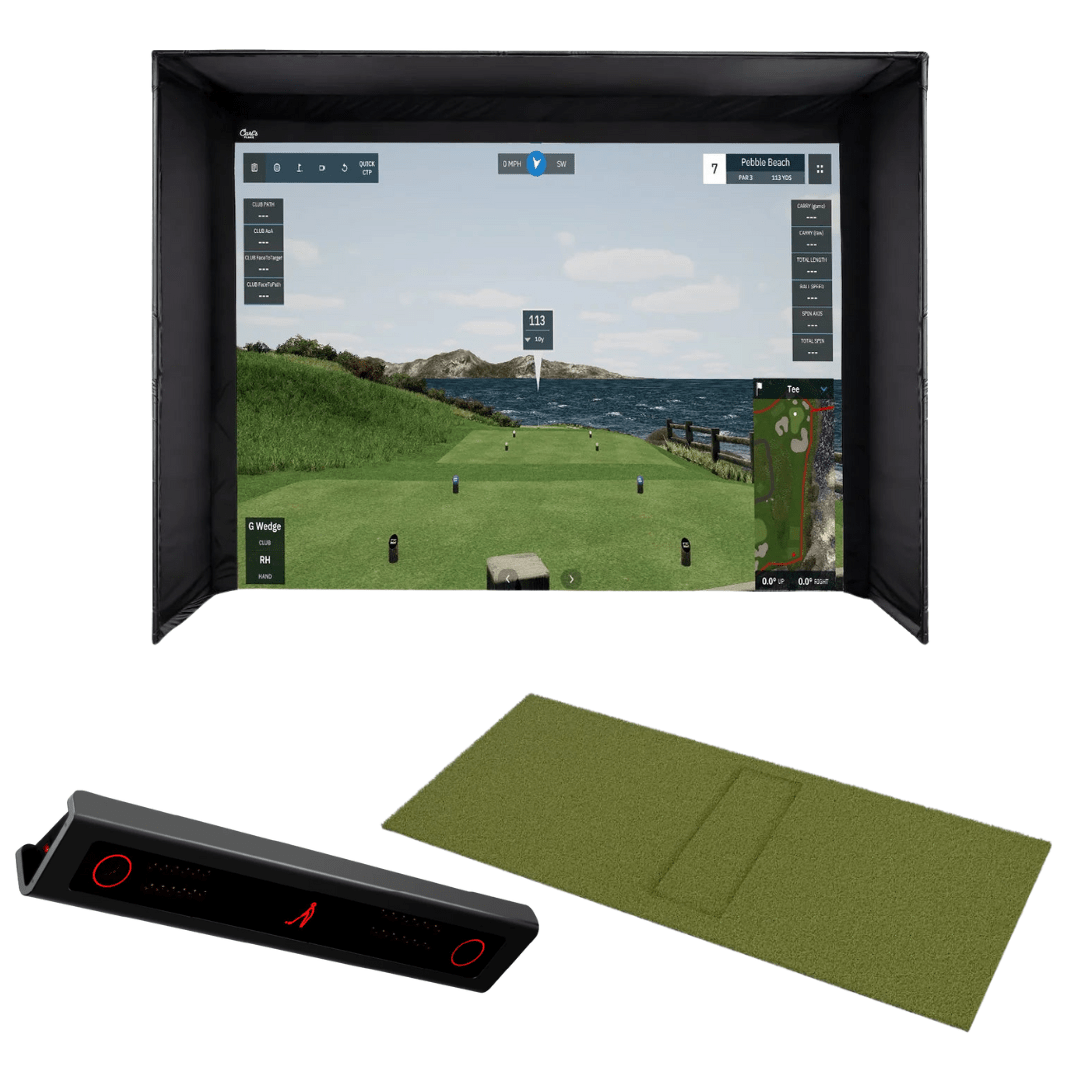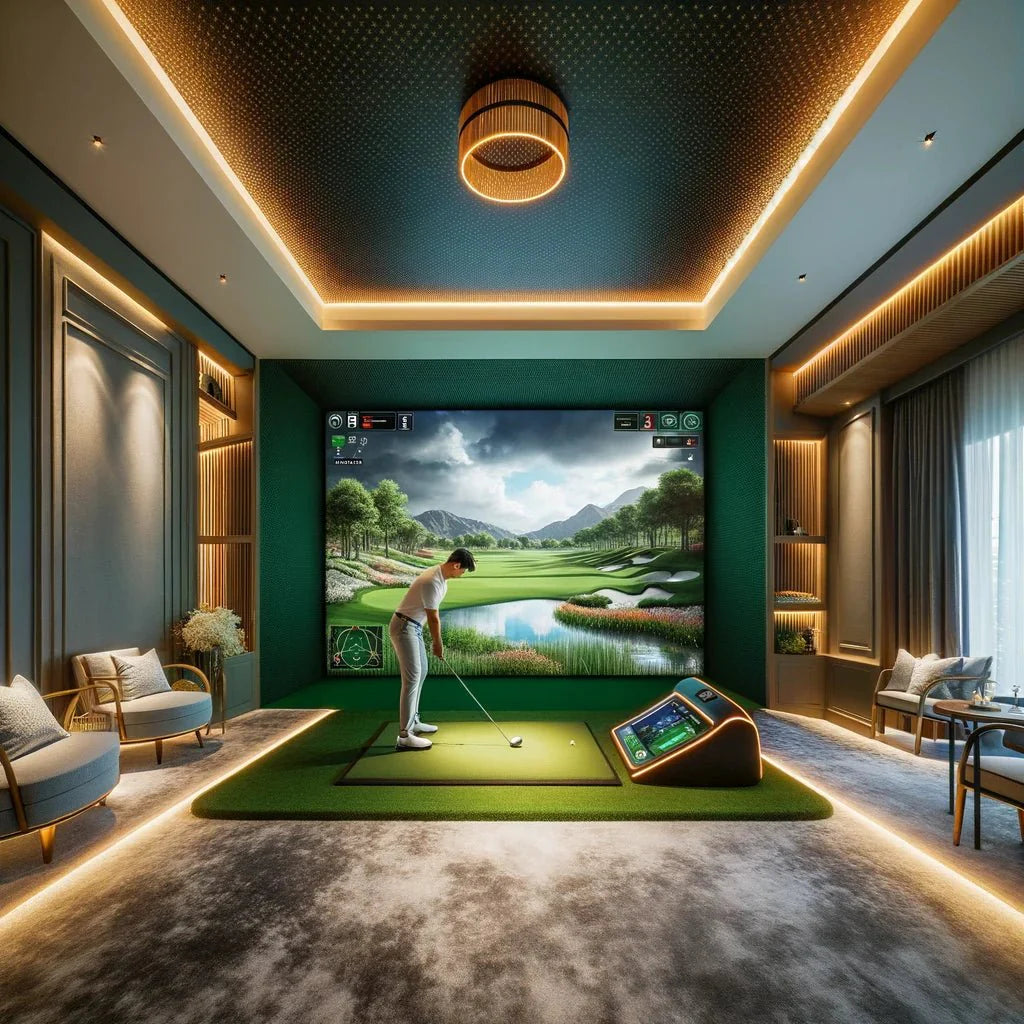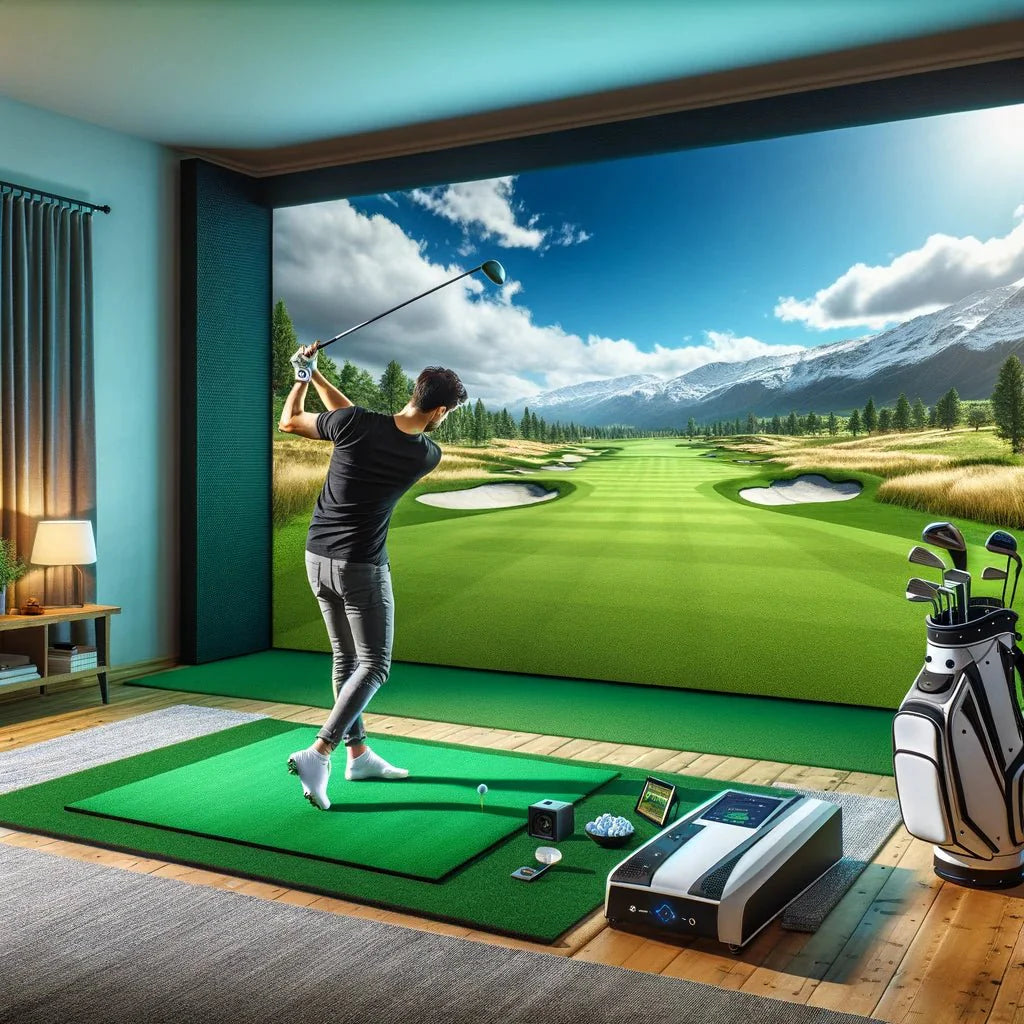The golf simulator shed has emerged as a popular solution for avid golfers looking to play golf anytime without leaving their backyard. By building a home golf simulator shed, you can enjoy the luxury of hitting golf balls in a private space, tailored just for you.
Planning Your Golf Simulator Shed
-
Proper planning is crucial for a successful golf simulator shed build. This stage involves assessing the ideal location, size, and ensuring all legal requirements are met. Here's a detailed breakdown:
-
Assessing Space and Location:
-
Backyard Assessment: Evaluate your backyard space to find the optimal spot for your golf shed. Consider factors like proximity to your house, ground level, and ease of access.
-
Sunlight and Environment: Account for natural elements like sunlight direction and surrounding trees, which might affect lighting and temperature inside the shed.
-
-
Size Considerations:
-
Simulator Space Requirements: Base the size of the shed on the requirements of your chosen golf simulator. Ensure there’s enough room for a comfortable swing and additional space for movement and equipment.
-
Extra Space for Amenities: If you plan to include seating areas, a mini-bar, or storage, factor this into the size.
-
-
Obtaining Necessary Permits:
-
Local Regulations: Check local zoning laws and building codes to determine if you need permits for construction. This can vary significantly depending on your location.
-
Building Permits: If required, apply for building permits, keeping in mind this process can take time and may involve fees.
-
-
Budgeting:
-
Construction Costs: Estimate costs for materials, labor (if hiring professionals), and any other construction-related expenses.
-
Golf Simulator and Equipment: Include the cost of the golf simulator, any additional golf simulator equipment, and interior furnishings in your budget.
-
-
Design Plan:
-
Custom Design vs. Pre-fab Options: Decide whether to go for a custom design, which offers more personalization, or a pre-fabricated shed, which can be more cost-effective and quicker to install.
-
-
Timeline and Project Management:
-
Construction Timeline: Create a realistic timeline for your project, considering factors like weather conditions, availability of materials, and labor.
-
Project Management: Whether you're doing it yourself or hiring professionals, effective project management will ensure the build stays on track.
-
Here's a table to help you organize these planning aspects:
Location Assessment Proximity to house, ground level, access, sunlight, environment Choose a spot that’s practical and aesthetically pleasing Size Requirements Golf simulator needs, extra amenities Minimum dimensions for comfortable play and movement Permitting Process Local regulations, building permits Varies by location; essential for legal compliance Budgeting Construction costs, golf simulator and equipment, furnishings Balance between quality and affordability Design Choice Custom design vs. pre-fabricated Depends on personal preference and budget Construction Timeline Weather, material availability, labor Plan for potential delays; set realistic goals Project Management Overseeing the build process, whether DIY or professional Essential for a smooth construction process By thoroughly planning each aspect, you can ensure your golf simulator shed build is well-thought-out and executed efficiently, leading to a successful and satisfying project.
-
Designing the Shed

-
Designing your golf simulator shed is a key step in creating a perfect golfing sanctuary in your backyard. This section involves thoughtful consideration of both the exterior and interior aspects to ensure functionality and aesthetic appeal.
-
Exterior Design:
-
Material Selection: Choose materials that are durable and weather-resistant. Options include wood, metal, or composite materials. The material should also complement the overall look of your house to maintain property aesthetics.
-
Architectural Style: Align the shed's architectural style with your home. Whether it's modern, rustic, or traditional, continuity in design creates a harmonious appearance.
-
Windows and Doors: Plan for windows and doors that enhance the shed’s functionality and appearance. Consider large doors for easy movement of equipment and windows for natural light.
-
-
Interior Layout:
-
Golf Simulator Space: The main focus is the golf simulator area. Ensure there's ample room for a full golf swing and the golf simulator equipment like screens and launch monitors.
-
Hitting Bay and Screen Placement: Designate a specific area for the hitting bay and screen. It should be free from obstructions, with adequate distance from the screen to the hitting area.
-
Additional Zones: If space allows, include zones for seating, a small workshop, or storage. This can turn your golf shed into a multi-functional space.
-
-
Insulation and Ventilation:
-
Insulation: Proper insulation is crucial for comfort, especially in extreme weather. Insulate walls, floors, and ceilings to maintain a consistent temperature.
-
Ventilation: Good air circulation is important to handle the heat generated by electronic equipment and physical activity. Consider ventilation options like vents, fans, or air conditioning.
-
-
Electrical and Lighting:
-
Electrical Setup: Plan for sufficient electrical outlets to power the simulator, lighting, and any additional electronics. The layout should consider the placement of all equipment to avoid cable clutter.
-
Lighting: Opt for lighting that enhances visibility without causing glare on screens. Adjustable lighting can create the right ambiance for different times of the day.
-
-
Soundproofing:
-
Noise Control: If your golf sessions might disturb neighbors or household members, consider soundproofing measures like acoustic panels or insulated walls.
-
-
Flooring:
-
Durable Flooring: Choose a flooring material that can withstand golf activity and is easy to clean. Options include reinforced laminate, vinyl, or specially designed sports turf.
-
-
Aesthetic Touches:
-
Interior Design: Add personal touches to make the space inviting. This could include golf-themed decor, comfortable furniture, and color schemes that create a relaxing atmosphere.
-
Technology Integration: Plan for tech integration like sound systems or smart controls for an enhanced experience.
-
Designing your golf simulator shed is about balancing practical needs with your personal style. It should be a place where functionality meets comfort, making your golfing experience enjoyable and convenient.
-
Electrical and Network Setup
-
Power Requirements: Assess the power needs for your golf simulator, lighting, and any additional electronics. This might involve upgrading your backyard's electrical setup.
-
Internet Connectivity: A stable internet connection is essential for software updates and online play. Consider extending your home Wi-Fi or installing a hardwired connection.
Selecting Your Golf Simulator

-
Choosing the right golf simulator is crucial for your shed build. It should match your golfing needs, skill level, and budget. Here are some detailed considerations to help you make an informed decision:
-
Types of Golf Simulators:
-
Entry-Level Simulators: Ideal for beginners or those on a tight budget. These usually have basic features and lower accuracy.
-
Mid-Range Simulators: A balance between cost and performance. Good for serious golfers who want a more realistic experience without the highest price tag.
-
High-End Simulators: These are some of the best golf simulators out there. Designed for the most realistic experience, offering high accuracy and advanced features. Suitable for avid golfers and professionals.
-
-
Space Requirements:
-
The size of the golf simulator will directly impact your shed's size. High-end models may require more space for advanced features like a larger hitting bay or multiple screens.
-
-
Technology and Features:
-
Launch Monitors: These track the speed, spin, and trajectory of golf balls. Some use cameras, while others use radar technology.
-
Software Capabilities: Look for simulators with diverse golf course options, game modes, and accurate physics engines.
-
Graphics Quality: Higher-end simulators offer more realistic graphics, enhancing the overall experience.
-
-
Budgeting:
-
Your budget will be a significant determining factor. High-end golf simulators can be a substantial investment, while entry-level models are more affordable but offer less realism. In a pinch, a golf hitting nets can be used to create a simple golf simulator.
-
-
Ease of Use and Setup:
-
Consider how easy it is to install and use the simulator. Some systems may require professional installation.
-
-
Customer Support and Warranty:
-
Good customer support and a solid warranty can be crucial, especially for more sophisticated systems.
-
Here's a table to help compare different types of golf simulators:
Type Space Needed Technology & Features Budget Ideal For Entry-Level Minimal (10x10x10 ft) Basic launch monitor, limited software features, standard graphics $500 - $3,000 Beginners, Casual Players Mid-Range Moderate (15x15x10 ft) Enhanced launch monitor accuracy, more course options, better graphics $3,000 - $10,000 Intermediate Players, Serious Golfers High-End Extensive (20x20x10 ft) State-of-the-art launch monitor, advanced software, realistic graphics $10,000+ Avid Golfers, Professionals When selecting your golf simulator, weigh these factors against your personal needs and the constraints of your golf shed. The perfect golf simulator for your backyard shed should offer the right balance of realism, features, and cost, enhancing your ability to play golf anytime in a controlled environment.
-
Building the Shed
-
Foundation: A stable foundation is critical for your golf shed. It ensures durability and the safety of your golf simulator setup.
-
Construction: You can either build the shed yourself or hire professionals. Make sure the construction is robust to support the weight of the golf simulator equipment.
-
Weatherproofing: Protect your investment from the elements by ensuring the shed is fully weatherproofed.
Setting Up the Golf Simulator

-
Once your golf simulator shed is built and ready, setting up your golf sim is the next exciting step. This process involves installing the equipment, calibrating the system, and making necessary adjustments to ensure optimal performance. Here's a detailed guide to help you through this phase:
-
Equipment Installation:
-
Screen and Projector: The projection screen should be mounted securely at one end of the shed. The projector, typically ceiling-mounted, needs to align perfectly with the screen for clear and accurate display.
-
Hitting Mat and Launch Monitor: Place the hitting mat in the designated hitting area. The launch monitor, crucial for tracking golf balls, should be positioned as per the manufacturer's instructions for accurate data collection. Make sure you get the best launch monitor for your setup, considering features such as reliability and portability.
-
-
Technical Setup:
-
Connection of Devices: Connect all devices, including the computer or console that runs the simulator software, to the projector and launch monitor. Ensure all cables are safely routed and organized to prevent tripping hazards.
-
Software Installation: Install the golf simulator software on your computer or console, following the manufacturer’s guidelines.
-
-
Calibration and Testing:
-
System Calibration: Calibrate the golf simulator system, including the projector and launch monitor. This process is critical to ensure the accuracy of the virtual golf course and the data collected from your shots.
-
Trial Runs: Conduct trial runs by hitting golf balls to test the system. Look out for any discrepancies in ball tracking or visual display and adjust the settings accordingly.
-
-
Adjusting the Environment:
-
Lighting Adjustments: Optimize lighting in the shed to complement the simulator's visuals. Avoid direct sunlight on the screen and use artificial lighting that doesn't cause a glare.
-
Sound System Setup: If you have a sound system, set it up to enhance the immersive experience. Adjust the volume to a level that is enjoyable but not disruptive.
-
-
Safety Precautions:
-
Secure Equipment: Ensure all equipment, especially overhead projectors, are securely mounted to avoid accidents.
-
Clear Play Area: Keep the play area clear of any obstructions. Regularly inspect the space for any potential hazards.
-
-
Fine-Tuning for Personal Preferences:
-
Custom Settings: Many golf simulators allow you to customize settings such as weather conditions, course selection, and gameplay modes. Tailor these to match your playing style and preferences.
-
-
Regular Updates and Maintenance:
-
Software Updates: Keep the simulator software updated for the latest courses and features.
-
Equipment Check: Regularly inspect and maintain your equipment to ensure it stays in good working condition. best golf simulator golf sim
-
Setting up your golf simulator in the shed is a blend of technical skill and attention to detail. By carefully installing and calibrating your equipment, you can create a highly functional and enjoyable golfing environment that allows you to play golf anytime, right in your backyard.
-
Interior Furnishing and Decoration
-
Comfort and Aesthetics: Make your golf simulator shed inviting with comfortable furniture and tasteful decorations. Think of it as an ultimate man cave for golf.
-
Storage Solutions: Include storage for your golf clubs, golf balls, and other equipment to keep your space organized and tidy.
Maintenance and Upkeep
-
Regular Maintenance Tips: Regular cleaning and checking of equipment will keep your golf simulator in top condition.
-
Seasonal Considerations: Prepare your shed for different seasons, especially if you live in an area with extreme weather conditions.
Conclusion
Building a golf simulator shed in your backyard transforms your golfing experience. It allows you to play golf anytime, in a perfect golf simulator environment, right at your home. From the initial planning to the final setup, each step brings you closer to having your dream golf studio. So start planning, and soon, you'll be enjoying your very own backyard golf shed, a haven for every avid golfer.

